How Does an HVAC System Work?
Your HVAC system (heating, ventilation, and air conditioning) is responsible for keeping your home cool in the summer and warmer in the winter. With a quality system, you’ll never feel uncomfortable, regardless of the outdoor temperature. But how do they work?
While all HVAC systems tend to work in the same way, there are variations, depending on the type of system installed in your home or office. To really understand how does an HVAC system work, you must first understand the parts of the system. Every system is made up of core parts - regardless of special features that may be included in some models.
HVAC System Core Components
Before you can properly understand how HVAC works, you must first understand the parts.
Furnace
This part is generally powered by oil or natural gas - though there are some electric models that require electricity to function. Inside the furnace is the heat exchanger, which is the part that is responsible for heating the air to set the set temperature.
The furnace is generally located in the home’s attic, basement, or sometimes in a specialty closet. It’s responsible for generating heat when your system is set to heat, rather than cool.
Air Conditioner
The air conditioner is the part of the cooling system that cools the air. It is located outside the home. It uses electricity and liquid refrigerant (or coolant) to cool the temperature of the ce. It sends hot air outside and pushes cool air inside. If you’re interested more specifically in the cooling side of things, take a look at our article on how central AC works.
Ductwork
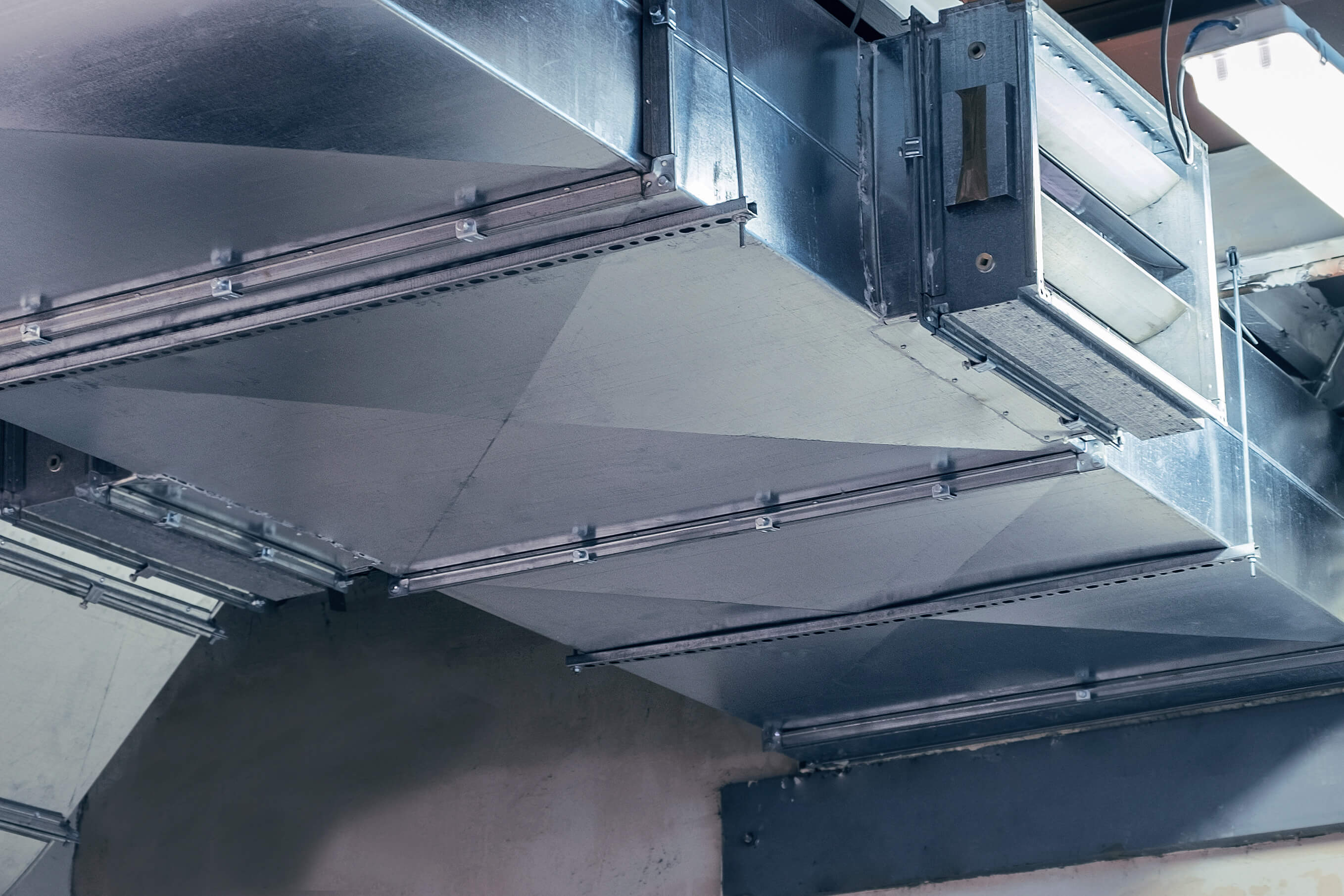
The ductwork is a series of ducts throughout the home. Ducts are pipes or tubes that conduct a substance throughout the area where they are installed. In the case of HVAC, the ductwork conveys the air - either hot or cold air based on thermostat settings - into vents throughout your home. The vents or registers in your home's floor or ceiling, are openings into the ducts, and how the air is delivered into each room.
Periodically check to ensure the vents do not become blocked so that you can ensure proper airflow into each room.
Remember, hot air rises, and cold air sinks, so you may have to adjust the vents from room to room to help you achieve the desired effect. If your vents are in the ceiling and a child’s bed is close to the vent, it could easily feel too hot in the room.
Return Air Ducts
The air return is the part that starts the ventilation cycle. The return draws in air, passes it through a filter, and then onto the main system.
Air Filter
The air filter is the second part of the system because the outdoor air is drawn into it, then cleaned before going on into the main system. Your filter has a big impact on your indoor air quality. Choosing the right size can make a big difference.
Exhaust Outlets
The exhaust outlets are where the exhaust from the central heating system leaves the home. A chimney flue is an exhaust outlet.
Electrical Elements
The electrical parts of your system are complex, but if you have issues with your system, check your breaker box to see if the breaker has been tripped.
Outdoor Unit
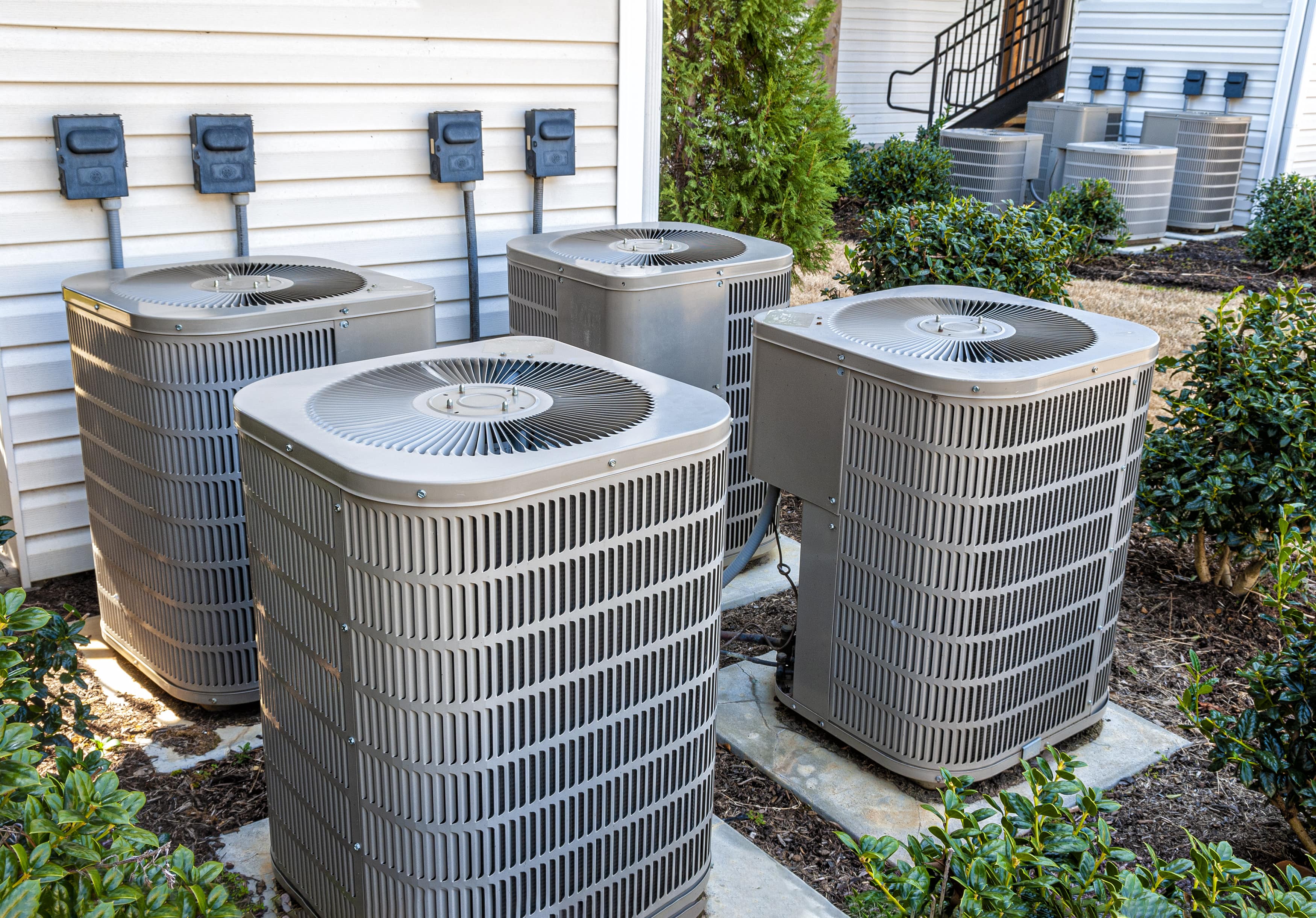
The outdoor unit is what most people are familiar with. The thermostat is what sends signals between the indoor and outdoor units to start and stop heating and cooling cycles. It holds the fan that provides air flow. For maximum efficiency make sure the unit is free of debris and vegetation.
The outdoor unit is most common in split system setups, where there is an indoor unit and an outdoor unit.
Compressor
Inside the outdoor air conditioning unit, you’ll find the compressor, which is the first step of the air conditioning system. It compresses the refrigerant gas into a liquid to make it possible to travel through the pipes into your main air conditioning systems.
Condenser
Inside the outdoor unit, you’ll find the condenser coils. The condenser’s main job is to remove heat.
Evaporator Coil
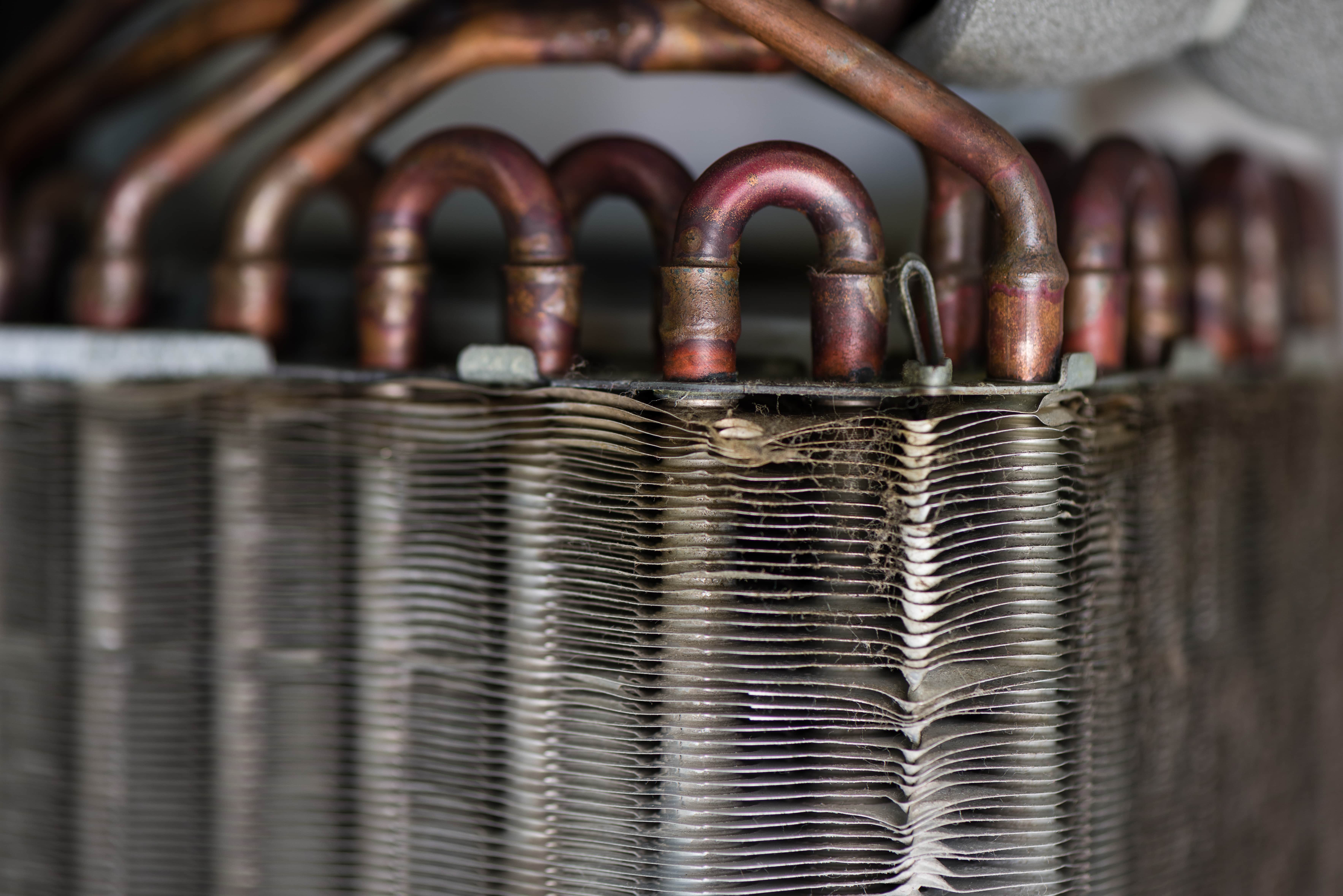
Also part of the outdoor unit is the evaporator coil that cools the air as it passes over, with some help from the refrigerant. Check your coil and refrigerant levels annually, or if you start to notice your system freezing up.
Blower
The blower draws in warm air through the main part of the unit.
Thermostat
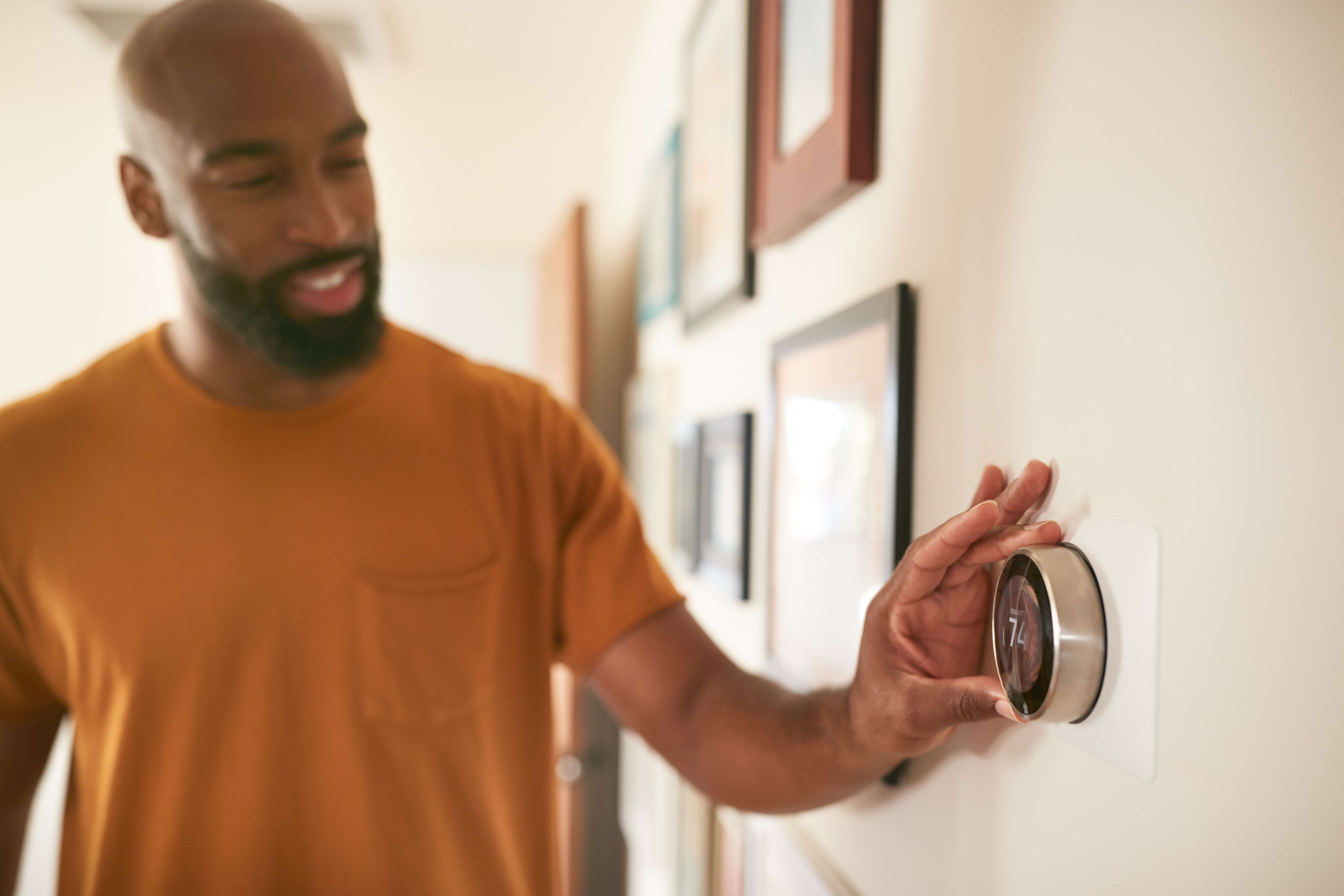
The thermostat, located inside the home serves as the brain of the entire HVAC system. It controls the mode and temperature. When in heating mode, it will heat up the home once it reaches a certain temperature. when the set temperature (what temperature you want in the home) is achieved, the system will turn off. When in cooling mode, it will cool down the home once a certain threshold is reached.
For instance, you can turn the thermostat down low if you don’t want the heat to run at night while you’re under blankets to stay warm. And you can turn it up high when you don’t want the air conditioning to run while you’re not home.
Today’s smart thermostats allow you to set minimum and maximum temperatures so that the system will switch into heating or cooling mode as needed. They also have filter change reminders and can be operated from your smartphone. If you’re not ready to go for a smart thermostat, you can also opt for a programmable option that allows you to set temperatures for seven days at a time.
How HVAC Works
Your HVAC system is mainly known for the fact that it keeps your home at the right temperature year-round - but it also helps ventilate.
The system starts with the thermostat. If the temperature in your home is warmer or cooler than the set temperature you’ve chosen, the system will turn on and work until the set temperature is reached.
In a typical forced air system, a heating element warms the air and the blower blows it into the duct system for distribution throughout the home. If the AC is running, the outdoor unit pulls warm air in, passes it over coils where the refrigerant cools it further, and then blows the cold air into the home.
What’s the Difference Between HVAC and Air Conditioning Systems?
Air Conditioning, or AC, is the last part of HVAC. While they are often used interchangeably, AC is just one part of the equation. Your air conditioning system is part of your entire HVAC system. If your system uses a heat pump, you have both central heating and cooling systems, since heat pumps can heat and cool, but an air conditioner can only cool.
It’s worth mentioning that the harder the system has to work, to achieve the set temperature for comfort in your home, the more energy it will consume. This can ruin your system’s energy efficiency and ultimately cause it to need early repair or replacement. Reasons why your HVAC system may have to work too hard include:
- Dirty air filters (the system pulls dirt, debris, dust, etc. from your air as it heats and cool)
- Dirty coils
- Significant (more than 3 degrees) difference in current indoor temperature and set temperature
- A significant difference in the outdoor temperature and desired indoor temperature. If it’s 80 degrees outside, don’t expect your HVAC system to be able to cool your home to 60 degrees. It’ll just constantly run while it tries.
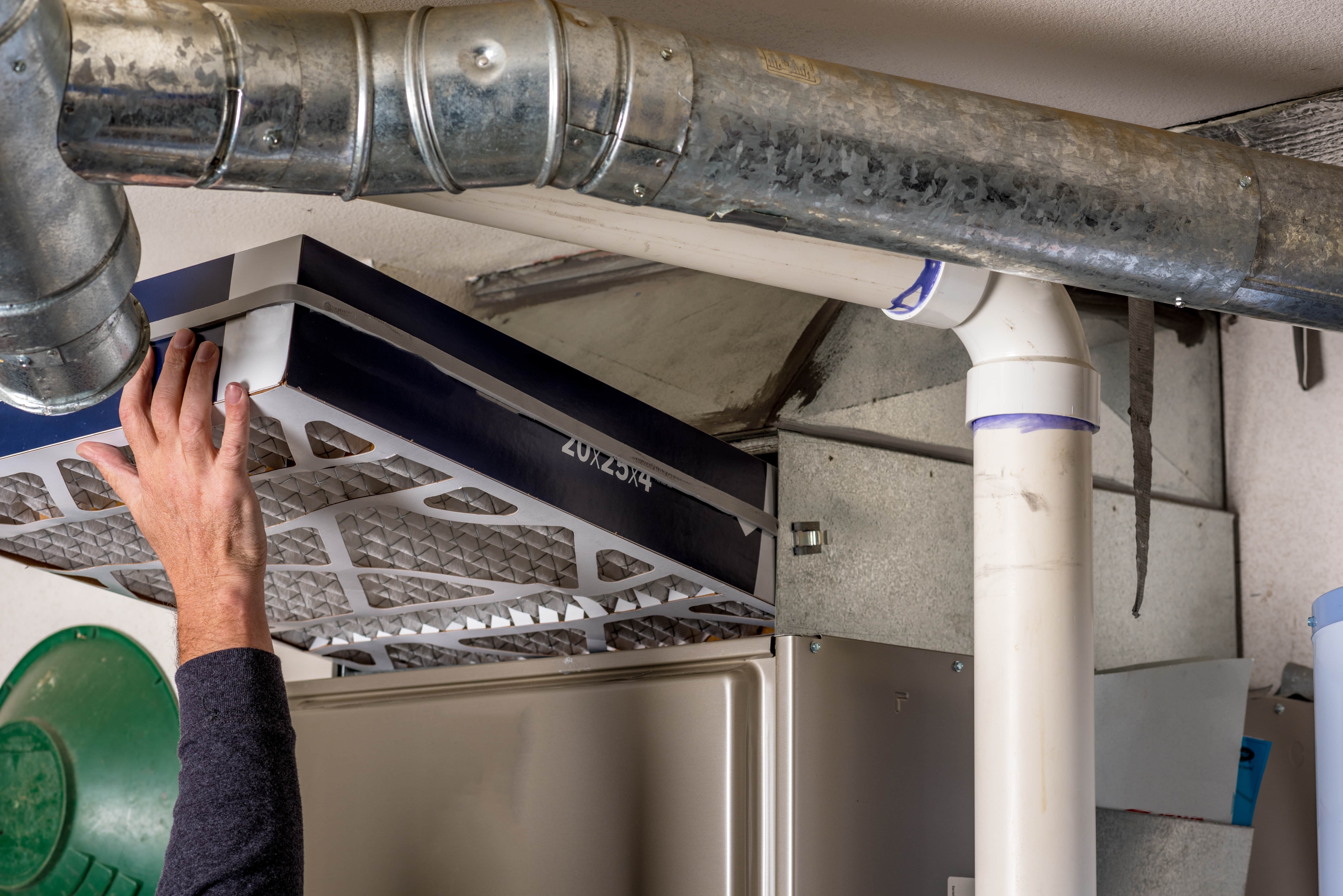
If you want to keep your HVAC system in tip-top shape and extend its overall lifespan, changing your filters regularly is a crucial part of general system maintenance. Here at Filter King, we have a wide variety of sizes to suit your needs. And what we don’t carry in stock, we can have custom-made for you.

